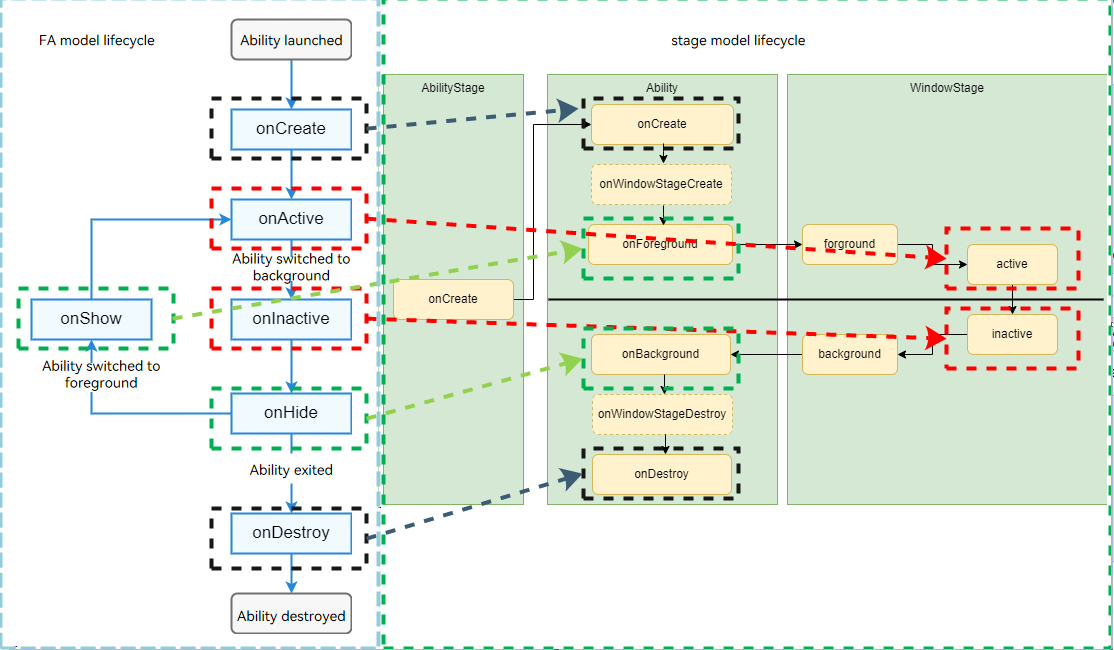# PageAbility Switching
The PageAbility component in the FA model corresponds to the UIAbility component in the stage model. To switch a PageAbility to a UIAbility, perform the following operations:
1. [Create a UIAbility](uiability-usage.md) in the stage model.
2. Migrate the PageAbility code to the UIAbility.
The PageAbility lifecycle is basically the same as the UIAbility lifecycle. The table below describes the details.
| PageAbility| UIAbility| Mapping Description|
| -------- | -------- | -------- |
| onCreate(): void| onCreate(want: Want, param: AbilityConstant.LaunchParam): void | The two methods have the same meaning and invoking time. In the stage model, parameters are added to the callback so that you can obtain startup-related data during creation.|
| NA | onWindowStageCreate(windowStage: window.WindowStage): void| This method is available only in the stage model. The callback is invoked when a window is created.|
| onActive(): void | on(eventType: 'windowStageEvent', callback: Callback<WindowStageEventType>): void;
WindowStageEventType.ACTIVE | The two methods have the same meaning and invoking time. In the stage model, this method is moved to the window object.|
| onShow(): void | onForeground(): void | The two methods have the same meaning, invoking time, and parameters.|
| onNewWant(want: Want): void| onNewWant(want: Want, launchParams: AbilityConstant.LaunchParam): void| The two methods have the same meaning and invoking time. In the stage model, the **LaunchParam** parameter is added to notify the application of the startup cause.|
| onInactive(): void| on(eventType: 'windowStageEvent', callback: Callback<WindowStageEventType>): void;
WindowStageEventType.INACTIVE | The two methods have the same meaning and invoking time. In the stage model, this method is moved to the window object.|
| onHide(): void | onBackground(): void | The two methods have the same meaning, invoking time, and parameters.|
| NA | onWindowStageDestroy(): void | This method is available only in the stage model. The callback is invoked when a window is destroyed.|
| onDestroy(): void | onDestroy(): void | The two methods have the same meaning, invoking time, and parameters.|

3. Adjust the migrated code, since the methods of loading pages are different.
- In the FA model, you can configure the page to be loaded by setting page information in **config.json**.
- In the stage model, you must call **windowStage.loadContent** in the **onWindowStageCreate** callback to load a page.
For example, to load the **pages/Index** page after the ability is started, use the following code in the **config.json** file in the FA model:
```json
"pages" : [
"pages/Index"
]
```
In the stage model, implement the following method in **MainAbility**:
```ts
import Window from '@ohos.window'
onWindowStageCreate(windowStage: Window.WindowStage) {
// Main window is created. Set a main page for this ability.
windowStage.loadContent('pages/Index', (err, data) => {
if (err.code) {
console.error("loadContent failed")
return;
}
});
}
```